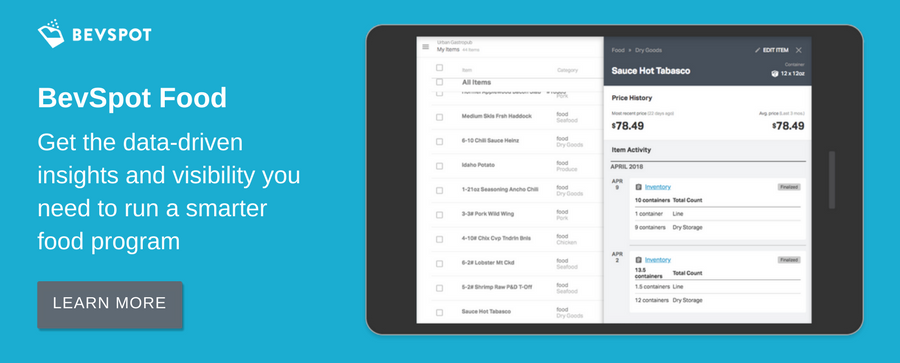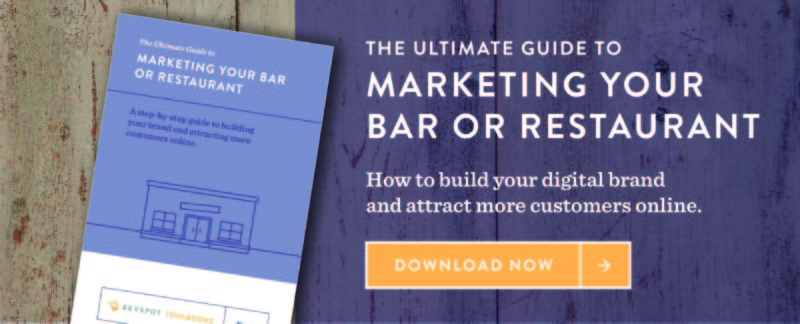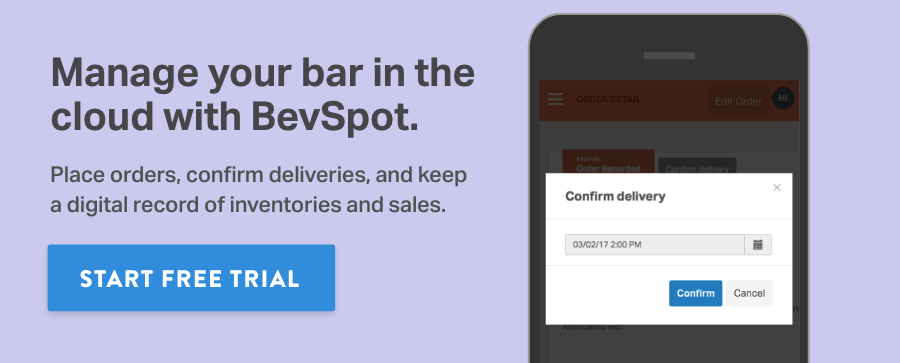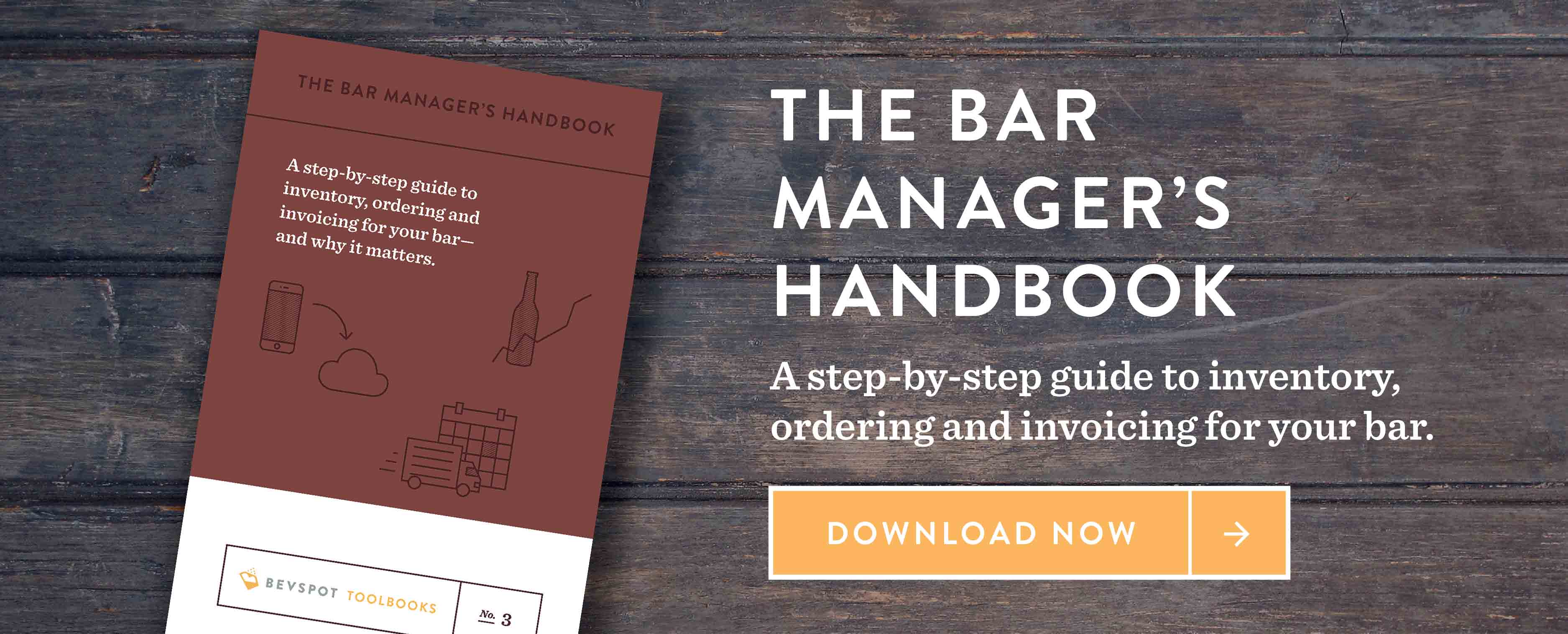On Valentine’s Day, 4 Tips from Your Bartender
Planning a romantic night out? Here’s some essential insider tips straight from behind the bar.
Of the many legends touted as the origin story for Valentine’s Day, historians can at least agree that the celebration is borne out of some occasion that brought together strangers in the spirit of love. That means we have a reason to meet—a date, perhaps—and a reason to celebrate—to eat and to drink (as if we needed a reason).
Valentine’s Day can take the form of a memorable first date, a traditional night out with significant others, or a night of galvanized bachelorhood for those wishing to protest. The stakes are high! That is to say that sentimental gestures, on February 14th especially, run the risk of being overly sentimental, awkward, and downright tacky.
To avoid a potential flop, heed the advice of those who make put great thought into curating such an occasion, and who forego their own plans so that you can enjoy theirs: your servers and bartenders.
Seasoned industry folks have seen it all: the igniting of a spark between strangers, the crash and burn, and everything in between. I sat down with Will, a veteran Boston-area bartender, to get a sense of some dos and don’ts from across the counter:
Do indulge in whatever specials might be up for grabs at locations around town.
There’s no shortage of restaurants in the area that are offering deals and special menus that befit the occasion. Will’s a big fan of the “Valentine’s cocktail, made for two. It gives [couples] something to share.”
Don’t think that special menu items are automatically a cliché.
While bars and restaurants have to accommodate a wide array of tastes, they wouldn’t put something on a menu that they couldn’t stand behind. “Think of it with this analogy,” Will says, “every year, Christmas happens, and things are marketed for Christmas. Whatever’s on the menu [for Christmas], the business supports it.” and wants you to buy it! “Why wouldn’t you want to capitalize on an event?”
Do plan a night that you’ll truly enjoy.
Maybe you want to spend the evening ogling at your partner across a white table cloth. But grand displays of affection might not be everyone. You can still use Valentine’s Day as an excuse to “find groups of people who are hanging out that night, and just hang!” Regardless of how you participate, it’s always “a particularly fun and busy night—sparkling really.” (There’s even a few places hosting anti-Valentine’s Day events).
Don’t aim to impress just for the sake of being flashy.
Citing far too many of these experiences, Will urges patrons: “don’t order the most expensive bottle just because you want to look cool. They’re that expensive for a reason, but if you can’t appreciate that, don’t go there.” Your evening should be about you and the person you’re with, not about what people see you doing. (On that note, do you really want to propose on Valentine’s Day?)
Above all else, keep in mind that a successful night out on Valentine’s Day can be very, very simple. Let the employees of your restaurant of choice tailor the night for you; take that stress off yourself. From there, Will boils success down to two principles: “Show up. Do that part.” Aside from that, “Do anything you would do on a normal date. It’s really like any other night but, of course, love is in the air everywhere.”
Eligible bachelors, happily married couples, anti-Valentine’s Day protesters alike have plenty of options for February 14th. And, if you need a suggestion from someone in the know, “find a place to go to dinner. Maybe start with a cocktail, move along to a bottle of wine, some food of finer quality. Then, go for a little stroll.”
If you’re looking for a little more flair, Will says, “I’ll be celebrating by setting cocktails on fire.”
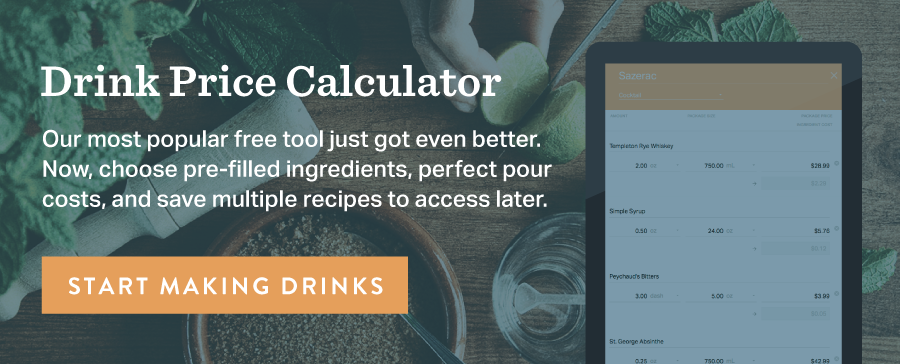
Creative Valentine’s Day Specials: A Guest’s Perspective
Love is in the air, but is creativity there too?
Generally speaking, Valentine’s Day is relied upon as one of the most if not the most profitable days for restaurants in the first quarter of the year—this especially applies in cold weather areas. It’s a day when both well-established and aspiring couples pamper each other to demonstrate their love. Jewelry, roses, chocolate, and expensive gifts are the traditional offerings of choice, but taking your spouse out to a beautiful dinner is often the highlight of the holiday.
If your restaurant has an even marginally “romantic” vibe, you will have no doubt already prepared a special Valentine’s menu: probably prix fixe and multi-course. You want it to be elegant yet accessible, and you encourage couples to book well in advance. Or maybe you stick to a la carte, but put an extra entree or two and a red velvet cake dessert special up on the chalkboard.
As a regular patron of restaurants and as someone who loves innovation and “out of the box” ideas, I was eager to see what my home of Providence has to offer in that regard. Most of the restaurants I perused were going the more traditional route, and I can’t fault them for that; “If it ain’t broke, don’t fix it,” as the saying goes. This city is chock full of exemplary eateries, and several of the ones I contacted said they would already have trouble squeezing me in when I called a full week out. They’re already booked solid, so they don’t need extra promotions to bring in guests.
As I looked around, however, I did find some places that were really going the extra mile in terms of creativity, and those are the ones I wish to highlight here. I also probed my social network to get recommendations and find out what they were looking for as they prepared to dazzle their amours. These are the results of my research:
Edible Arrangements
The Duck & Bunny, the adorable creperie, cupcakerie and self-proclaimed “snuggery” tucked away on Wickenden Street devised a very clever (and affordable) alternative to the traditional bouquet of roses: the Bouquet of Cupcakes, available for $20 a half dozen or $35 a dozen on special order. The colorful flavors include lemon blueberry, chocolate raspberry, champagne rose, strawberries & cream, honey lavender, and chocolate blackberry. Their seven-course Valentine’s Day prix fixe dinner, with multiple appetizer and entree options to choose from like beef bourguignon, crepeccini, and pork roulade, also seems like a bargain at $125 per couple.
Hip to Be Square
Not to be outdone, Julian’s on Broadway is one that came heavily recommended by my friends; renowned for their quirky, humorous decor and fantastic offerings (including in the vegetarian/vegan department), Julian’s also distinguishes itself as a “perfect date night” thanks to patient, attentive service, great pacing of courses, and solid drink pairings priced at $129 a couple for a six-course menu. My favorite part personally, however, is the retro promotional art they’ve created, “We’re Celebrating The Power of Love”: an old-school cartoon of Huey Lewis in hot pink, turquoise, and yellow. If Back to the Future references don’t impress your date, then I don’t know what will!
Just a Lovely Brunch
Another interesting direction I saw taken is that Clean Plate on South Water Street has a Valentine’s Day Brunch on Sunday the 12th, featuring Red Velvet waffles with walnut cream, scallop cake benedict, lemon ricotta pancakes, and chicken fried steak Benedict with tomato bacon hollandaise on biscuits, paired with blood orange mimosas and roasted strawberry lemonade–both drink specials specifically for the event. It seems like a smart idea to provide folks with that alternative option, but I didn’t see many examples of other restaurants doing it.
I asked Clean Plate owner and chef Susan Alper why they decided to do brunch instead of a dinner special, and she responded that, “We like to be outside the box here, and it was just a different thing to do. We do a great brunch normally, so it seemed like a smart idea.” It’s the third Valentine’s Day brunch for the restaurant–as many years as it’s been open. “The response has been really great,” says Susan.
Sea of Roses
Easily the most beautiful and intriguing Valentine’s Day event I learned about occurs at Basta Ristorante on Broad Street in nearby Cranston. For the third year straight, they are holding a Celebration of Roses, hanging literally thousands of red and pink roses from the ceiling above the seating area. The food is said to be excellent, but even if it wasn’t, looking at the photos makes me want to experience this romantic wonderland firsthand.
Some Tips from a Guest
A simple, quick promotional idea that I saw a few places use is to take photos of either your signature or seasonal cocktails that are traditional Valentine’s colors like red, pink, burgundy, and peach: they create a pretty, holiday-themed display that also gets mouths watering. I will also point out that quite a number of restaurants did not post their special menus online, and as a consumer, it’s nice to be able to look at them before making a decision, and I don’t like to bug busy restaurant staff by calling to ask. Make your specials easy to find on your website and Facebook page—maybe make a specific Facebook event with the menu clearly displayed, and make sure to answer peoples’ questions in a timely fashion. Don’t make customers have to work to find menus or get ahold of you.
Whether you go the more traditional route and cater to your loyal clientele, or whether you choose to spice things up and get creative, the most important thing, of course, is to maintain high levels of service and quality on this busy night. Help your couples make each other’s nights special and memorable, and they’ll be sure to return next year.
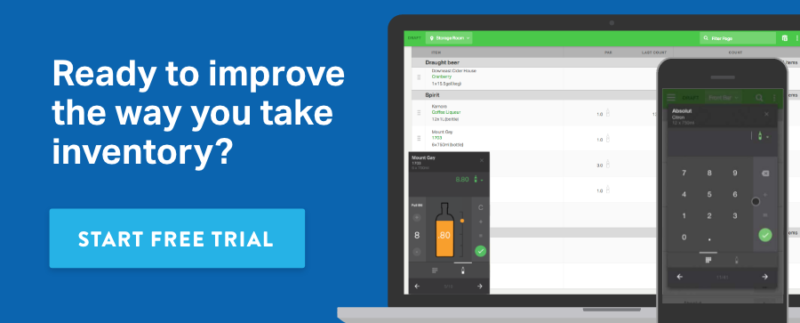
Schedule 15mins to chat with a product specialist
Start a FREE Trial Today! BevSpot offers full product education and account setup for all customers! No card Information needed!
BevSpot Best Practices for New Users
If you’re reading this, you’re already on the right track.
So, you’ve made the commitment to make your bar program more efficient with BevSpot. The next steps might seem scary to you. As many bar owners and managers will attest, the process of adopting new technology (especially within the hospitality industry) can sometimes feel drawn-out, awkward, and flat-out painful at times. We totally understand your experiences with other technology solutions might make you feel apprehensive about adopting a new system to your establishment.
But, if you take a skeptic’s approach towards onboarding and using BevSpot, you could be missing out on the majority of benefits you signed up for in the first place. What we’ve seen from our top users demonstrates that it’s worth it to approach this process with an active mindset. And they’ve also taught us a few tips we’d like to share for getting the most out of BevSpot.
Personalize First, Questions Later
Our customer success team both support and advise plenty of BevSpot users. And what they’ve seen as markers for success are when people take the extra time to really draw everything they can out from the software right from the start.
Inventory
One essential step that the team have seen users take is utilizing BevSpot’s built-in customization options to tailor the software to match their establishment. Users that take the time at the beginning to personalize their inventory dashboard to fit their bar’s setup and actual inventory process will end up taking more accurate inventories in the future. It’s simply much easier to adopt new habits when you mold your technology to fit your old ones.
Ordering & Invoicing
Other tricks that customer success has noticed the best users pick up are inputting invoice numbers with order histories in order to track them, tracking any activity using the built-in authors and timestamps feature, and successfully exporting order histories to Excel for accountants. Most importantly, a habit that high-performing users have picked up is actively tracking negative usage and quickly going back to address any mistakes in order to make sure sales reports can line up properly with your inventory and ordering data.
Customer Support for Success
The largest takeaway that customer success brought was that the people who get the most from BevSpot are the ones who aren’t afraid to reach out to them with problems as soon as they come up instead of pushing them off or desperately trying to figure them out without any help. What they’ve also seen is that people who are more consistently engaged with the platform and keep up a regular and frequent pace of inventories are the ones who succeed the most with BevSpot.
It’s Alive!
While we’re on the point of communication and engagement, something that often gets lost is that BevSpot is a living and breathing software platform. As it continues to evolve with each iteration, a lot of the direction of growth is actually driven by user feedback. Maggie Crowley, BevSpot’s Product Manager, notes how the best users in her eyes take complete ownership of their BevSpot account. Not only are these people taking full advantage of what BevSpot has to offer, but also constantly looking for and suggesting improvements where they don’t exist yet.
Some of the newest features such as inventory transfer between locations and the improvements we’ve made to the free Drink Price Calculator were directly powered by suggestions made by users. People like Rob Holder of JNK Concepts also value the receptiveness of the team that you won’t often find elsewhere.
“Being able to see my feedback implemented into the system has been awesome. With some of the other systems out there, I never got the impression that my feedback was actually valued or actively investigated.”
Maggie’s dream is to have all of the users give us feedback towards where they want to see changes and additive development, so she can successfully prioritize how the platform grows over time to bring even more value to the users.
Taking The Next Step
If we could leave you with some lasting advice, it would be to approach your next steps within BevSpot with the same energy and curiosity that you had when getting into the industry in the first place. All of our successful users have one thing in common: they understand that they are investing in a system that is totally new to them. Be willing to break habits and approach things differently than you have in the past, but, at the same time, don’t be afraid to ask us questions and figure out how all of us can best move forward.
And, if you need more help, feel free to check out our Help Center to find the answers to all your questions.
Cheers!
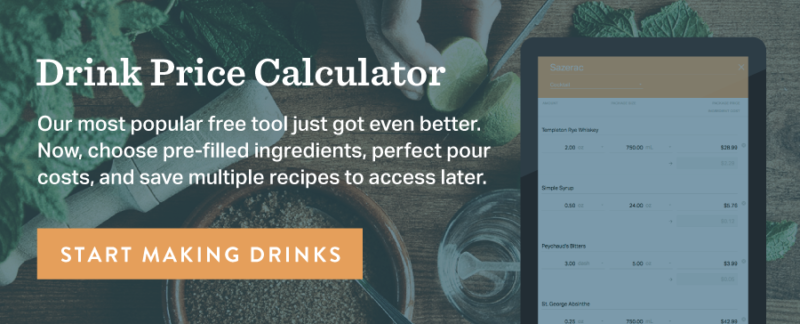
Schedule 15mins to chat with a product specialist
Start a FREE Trial Today! BevSpot offers full product education and account setup for all customers! No card Information needed!
5 Profitable Tequila Cocktails, Ranked by Bar Pour Cost
In previous analyses of bar profitability data, we found that pour cost, the preferred measure of efficiency for beverage programs, is around 15% for spirits & cocktails. However, upon further investigation, we found that, while the 15% aggregate pour cost measures general profitability for individual establishments, it also represents an average of all the various drinks being sold by those bars.
As most bar managers and owners will tell you, costs and pricing can vary widely between drinks, especially cocktails: the profit margin on a bar’s Negroni recipe almost certainly won’t be the same as that of an Old Fashioned. Knowing the costs and profit margins of various recipes is critical for designing and pricing a successful drink menu. We’ll be crunching these numbers for a range of common cocktails. To make comparing between drinks easy, we broke these recipes down based on the liquors that they contain.
To find the profit margins that BevSpot users are pricing into their menus, we compared their drinks’ list prices to their unit costs before adjustments for spillage and comped drinks. We also estimated the basic cost of each recipe by comparing users’ unit costs after those adjustments. Doing this allows cleaner comparisons between each cocktail on two metrics: typical profit margins, and typical unit pour costs.
We’ve taken a look at sales data from 9 metro areas across the United States to see which popular cocktails are the most and least profitable for bars. Here’s what we found for 5 tequila-based classics.
These Are America’s Most Popular Beer and Liquor Brands Because We Like to Party Hard
Read the original on Maxim’s Maxim Man section.
Bar management software company BevSpot has released an illuminating new report on the most-ordered brands of alcoholic beverages in the U.S., based on data taken from thousands of bars, restaurants and assorted swilleries across our great nation. And thanks to our booze-loving brethren at Bro Bible, who dutifully rounded up the infographics published in the report, we can share all of the key stats right here.
More articles on popular beer
America’s Most-Ordered Beer & Liquor Brands for 2017 So Far
The Most Popular Beers and Liquors in Florida Bars
The Big Apple is often seen as a modern-day Mecca when it comes to trends in the hospitality industry.
Lets start by looking at the top-selling suds. Happy Hour favorite Bud Light holds a commanding lead with a staggering 7 percent of all bar beer orders. Some craft beer nerds may turn up their noses, but fuck those guys because Bud Light is the jam. Congrats, BL!
8 Profitable Gin Cocktails, Ranked by Bar Pour Cost
8 Profitable Gin Cocktails
As our users know, we at BevSpot care a lot about data. What we’ve found in the past was that pour cost, the preferred measure of efficiency for beverage programs, is around 15% for spirits & cocktails. Under these results, we came to the conclusion this means that, before paying wages and rent, the median BevSpot bar is getting an 85% gross profit margin on their Moscow Mule.
As we’ve dug a little deeper, that conclusion actually turned out to be inaccurate. The 15% aggregate pour cost represents an average of all the various drinks being sold by those bars. Veteran bar owners and managers will know that costs and pricing can vary widely between drinks, especially cocktails: the profit margin on a bar’s Negroni recipe almost certainly won’t be the same as that of an Old Fashioned.
As part of a continuing series on the profitability of cocktails based on spirit, we dive into the world of gin and take a hard look at the profitability of some textbook gin-based cocktails.
To find the profit margins that BevSpot users are pricing into their menus, we compared their drinks’ list prices to their unit costs before adjustments for spillage and comped drinks. We also estimated the basic cost of each recipe by comparing users’ unit costs after those adjustments. Doing this allows cleaner comparisons between each cocktail on two metrics: typical profit margins, and typical unit pour costs.
We’ve taken a look at sales data from 9 metro areas across the United States to see which popular cocktails are the most and least profitable for bars. Here’s what we found for 8 gin-based classics.
Schedule 15mins to chat with a product specialist
Start a FREE Trial Today! BevSpot offers full product education and account setup for all customers! No card Information needed!
Behind the Scene: The United States Bartenders’ Guild
Do you have a local chapter?
Although it has more than doubled its membership in the last few years alone, the United States Bartenders’ Guild (USBG) is still an unknown entity to many in the industry—but perhaps not for much longer. With a mission of “uniting the hospitality community to advance professional bartending” and boasting more than 60 local chapters offering affordable membership benefits like education, camaraderie, and career growth opportunities, it can be tough to imagine why you wouldn’t opt to join your local chapter—or start one, if it doesn’t exist yet.
Almost 70 years ago, the USBG started as a small, exclusive, jackets-and-ties organization in Northern California. About two decades in, the USBG applied to become a 501(c) nonprofit organization, and succeeded. The club ultimately evolved into a nation-wide organizational force for empowering bartenders “to take charge of their careers” through education and enrichment programs. The USBG now welcomes any and all to become members and to run for leadership roles during election periods in their local chapters or at the national headquarters in Henderson, NV.
Its three branches offer education, networking and competitions, a charity arm focused on bartender wellness programs and relief funds, and an accreditation program going up to Master Mixologist. The USBG also offers the added benefit of providing members with an instant network when they relocate to a new city or state, and its presence helps with the overall public perception of those who tend to view bartending as a college or in-between-jobs gig rather than the honed craft and lifelong profession that it is for many.
Frank Martucci is General Manager of Beverage Operations at Twin River Casino in Lincoln, RI and was one of the founders of the Rhode Island USBG chapter in 2011—the 22nd chapter to open. A year later, Martucci ran for national office and was elected national vice president. He later took over as president of the USBG national charity foundation in 2014, and now recently stepped down and was elected treasurer for the national board.
We asked Frank a few questions about his experiences with the USBG:
BevSpot: What does the USBG do, in your own words?
Frank: It unites beverage professionals across the country to continue showcasing and improving our craft through competitions, education, and networking. It’s a great time for it, especially right now, because there seem to be constant revolutions of spirits—both new and coming back. The consumer is also much more willing to learn, understand, and gain knowledge about things that they intake, so it’s important for bartenders to know these things. The USBG also brings people together both personally and professionally; it gives opportunities to network, travel, explore, and learn. It has been amazing for myself and others who have joined.
How has the USBG evolved over the years you’ve been a part of it?
Aside from doubling our membership and chapters, we’ve seen more of that old-school passion and appreciation for the craft of bartending returning overall. People want to be the best professional bartender they can and are trying to hone that, but not in a way that is stuffy or has an attitude. Bartenders really want to know what they are doing more and more—how can I make the best cocktail? What are the best spirits to use? There are so many different options, and [as] America’s palette continues to change and become more flavorful and full-bodied, we feel it’s more important than ever to understand the consumer and who we’re talking to.
Is there a lot of back-and-forth between the local chapters and national levels?
Yes, we are very hands-on with local boards. We hold five regional conferences a year and one national conference every two years. Members have the chance to go to regional meetings for education and to understand what’s going on locally. All elected positions are non-paid, including four executive board and then five regional VPs. I do it, because I love giving back to the industry and also to help show that a very small state like Rhode Island can be very active nationally. It’s also cool to visit different cultures and cities to see what’s working in various areas.
Are there any events coming up in the immediate future?
There’s so much going on in the industry these days with technology, new house spirits, and service techniques, and we encourage every chapter to be creative and tailor itself to what its own members want. I’ll be hosting an event called “A Bitter Affair” in February at Twin River. It will be focused on bitter aperitifs and digestifs as well as sour beers, and a portion of proceeds will go back to the bartender relief fund. We’re bringing in members from Boston and New York. Ten years ago, this sort of thing wasn’t happening. In Las Vegas this March, there’s the national Nightclub and Bar Show competition, and we’ve also launched the Star of the Bar competition in partnership with the National Restaurant Association, which holds its finals at the Bar Show Chicago this May.
What advice would you give to those interested in founding a new chapter?
Be patient, do your studies, and don’t rush it. The more organized you are, the better; we waited a year and a half before founding RI. A lot of people just aren’t gung ho enough to really get a chapter going, but the more you give back to it, the better it is. Make sure you have a strong board that understands it’s not just one time thing, it’s a minimum two-year commitment to get a chapter up and running. You are representing your local chapter, but also make sure you have people behind you to help you out and you’re not all on your own. Fortunately, the USBG offers lots of tools you can utilize to make it a successful launch—you just have to take the initiative.

Matching Your Well’s Taste to Your Bar’s Style
Working to create the perfect well for your bar isn’t as simple as it may first appear.
Many of us don’t have the ability to build a well completely from scratch, often being limited by existing structures, menus, or budgets. What this means is that crafting a well that is both stylish and utilitarian is truly a challenge. However, it is one entirely worth undertaking. As we covered in part one of this blog series, choosing a well is as much about strategy as it is about a bar’s style.
Beyond the practical aspects of your physical well set up, what your well stocks says a considerable amount about the taste level, intent, and structure of your place. The big questions I asked in the first part of this two-part article series addressed practical concerns. A more organized, ergonomic speed rack creates a greater sense of ease when crafting cocktails, which translates to an overall mastery of space. There is nothing more appealing as a bar patron than to see a confident, relaxed bartender.
We behind the stick know that the creation of this persona has taken years of training, a careful balance of grit and charm, and a true love of cocktails, spirits, and service. Keeping this in mind, style, service, and staff must all be equally considered when perfecting your well. This means asking questions like:
What is the overall style and tone of my establishment?
The tone of an establishment justifies and enhances the style, menu, and price point set by the space. While not as obvious as a bar’s “theme”, a purposeful tone sets the mood within a space and guides guests towards comfort and enjoyment.
To build towards a thoughtful tone for your establishment, the translation of style from well selection and construction should appear effortless, yet purposeful—just like each touch your bartenders complete in making a row of perfect cocktails. Whether or not the majority of your guests are the type to judge—or even notice your well selection can all be made irrelevant with the one guest who decides to Yelp about your plastic handle of vodka, off-brand mixto tequila, or janky cheater bottle.
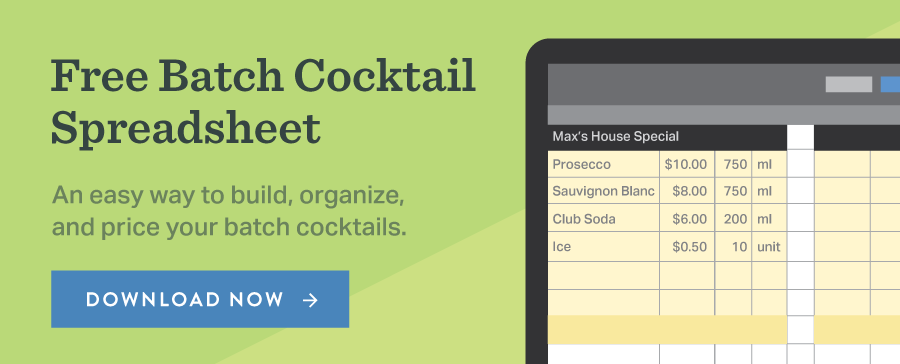
Is this style and tone reflected in the well spirit selection?
The difference between a well gin martini at a dive and a well gin martini at a cocktail lounge is like night and day (or Monarch and Beefeater, for those who know their gin). For example, a craft cocktail bar may stock creative house syrups and infusions in their well, while a classic cocktail bar will generally stock absinthe, cognac, and chartreuse.
Personally, I have fought for slightly higher end well pours at my bar with the thought of style and tone in mind. In my opinion, Beefeater is the most versatile, respectable gin in its category when it comes to crafting cocktails and, therefore, worth investing into the higher price point, because it fits the creative and cocktail-forward character of the bar.
Similarly, there have been times when I have perfectly happy with a slightly cheaper tequila in the well, providing that it is 100% agave and, again, amazingly versatile in cocktails. My bar has gone out of its way to stock Squirt to make classic palomas, and we are all proud and happy to serve Pueblo Viejo blanco in those palomas. Is PV the sexiest, most expensive 100% agave tequila on the market for cocktail use—no—but it is clean and reliable, which is most important to my bar!
Is the tone of the establishment reflected in its pricing?
Is your space focused on two for one jello shots, or tableside wine service? How are these nuances represented monetarily on the menu? A bar with $2 well drinks says “hey, we’re happy to let you toss ‘em back and have a great time playing ski-ball”, while a bar whose cocktails run you $15 a pop says something more like “hey, we’re happy to serve you perfectly prepared craft cocktails, so take your time and enjoy them.”
Make sure your menu pricing is consistent with the tone of your establishment and falls in line with the numbers you need to hit.

Are your bartenders in a position in terms of service to succeed with your well?
If your bar’s wells are set to accommodate your bartender’s needs, their job becomes infinitely easier. If the ergonomics and economics of the well are all set up for your staff, they can focus 100% of their energy on truly bartending. Ease behind the bar comes, of course, from skill and experience, but also from a cohesive work station.
Working in cocktail bars has taught me time and time again that although a good cocktail is always memorable, a great customer service experience with a talented bartender creates a more secure and lasting bond with guests. Creating a welcoming and appealing tone in a bar setting comes from staff that feel comfortable and confident in their environment. Crafting a functional and stylish well setup facilitates this environment.
In many ways, the art of bartending has been devalued. Do not let a difficult well situation hold your bartenders back from fulfilling their role as the best bartender they can be for your space. Establishing a set of well spirits that your bar staff feels confident pouring neat, as well as utilizing in cocktails goes a long way towards smooth service, from both sides of the bar. What all of this well selection talk boils down to is the idea that style, consistency, and smarts matter. If your physical well is tight, your spirit selection is consistent, and your space reflective of your brand, then your staff will work better and your guests will leave happier.
Have any comments, or stories of your own? Please share in the comments below and on social media!

Schedule 15mins to chat with a product specialist
Start a FREE Trial Today! BevSpot offers full product education and account setup for all customers! No card Information needed!
The Top-Selling Liquor Brands in New York City Bars
What spirits are the most popular for New York City Bars & Restaurants?
New York City could easily be considered a modern-day Mecca when it comes to cocktails in the United States. Home to legendary institutions like The Dead Rabbit, Saxon + Parole, and The NoMad—all 2016 Spirited Awards winners—the city that never sleeps has always been at the forefront of bar industry trends.
At the beginning of this year, we published an extensive annual report on the order data of BevSpot users across the United States and Canada. This data includes a vibrant community of users throughout the New York City metro area and we couldn’t resist investigating what these users have been stocking their shelves with to see how they differentiate themselves from the pack.
The following material aggregates 2016 order data from BevSpot users in the New York metropolitan area, as defined by the U.S. Census Bureau. All figures represent percentages of orders in dollar terms.
Putting The Perfect Craft Beer On Tap
From local love and nostalgia to gastronomic science, tapping the perfect craft beer is an art that we’re here to help with.
What’s on draft? Ostensibly, this is a question you’ll be hearing from thirsty and inquiring patrons. The question really begins with the bar manager. What a bar manager or beverage director puts out on their bar’s draft makes a statement about the type of bar they want to run, from sports bar to grungy dive to the high-end taproom.
In any bar, a healthy selection of carefully considered craft beer goes a long way, and, to get it right, an astute bar manager must master the art of selection. Here are some of the basic tips and tricks for putting together a great craft beer program.
Pick For The Pairing
A great way to pick which craft beers is to match them with the food menu you serve. Different foods will react differently with different beers, and some types of beer pair more naturally than others with specific food flavors. You can go even further by choosing pairings that will enhance flavors, complement one another, or cleanse the palate between courses. Here’s a (very) basic rundown of types of beer and how you can pair them with your food offerings:
IPA: Luckily, the best selling craft beer in America is also the most versatile. For the adventurous type, the Indian Pale Ale will increase the intensity of anything spicy. It will sit well with and complement most seafoods and burgers, and many types of smoked barbecue. It will also lighten the weight of heavier fare, mostly foods high in salt or fat from fries to steaks, cleansing the palate and readying customers for another round. The IPA is the swiss army knife of the craft beer arsenal.
Wheat Beer: Light and refreshing, this category covers everything from witbier to hefeweizen. Patrons looking to eat healthier, from salad to chicken to fish, will find the wheat beer to be a satisfying and refreshing choice.
Amber Ale: A perfect blend of malt and hops, the amber ale works equally well with the time tested soup and sandwich. Or, during the big game, it can act as a great complement to pizza and wings.
Porter, Stout, and Dark Ale: The beers at the dark end of the SRM (Standard Reference Method) chart are known as dessert beers for good reason. The traditionally heavier, sweeter beers match well with chocolate and coffee, especially since many contain hints of those very items. This is especially true of the porter and doubly so for the stout, as the richer malt taste will sit heavier in mouth. These heavier beers match well with heavier meals; barbecue, steak, ribs, mashed potatoes.
Tapping the right beer to accentuate your menu will present a consistent theme to satisfied patrons.
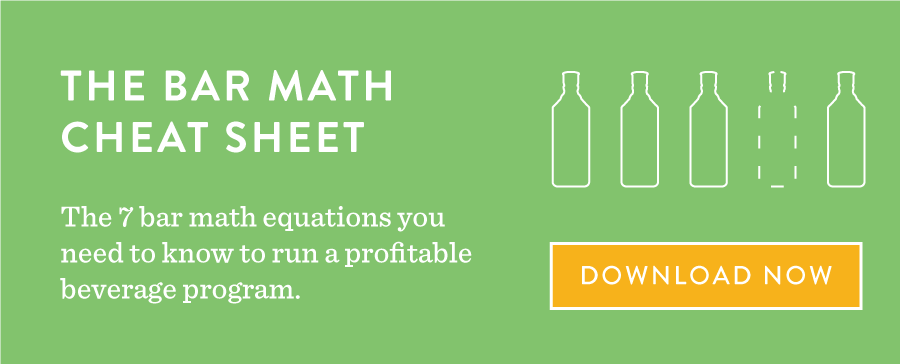
A Reason For Every Season
Another important detail to keep in mind as you assign taps is the weather and climate in your locale. Is it summer? Or are you located in a place with traditionally warm weather? You’re looking at guests who will be likely expecting a fruity or lighter wheat beer like a saison or hefeweizen.
Fall can bring a drop in temperatures, a crispness to the air, and the changing colors of leaves. A craft cider, whether served cold or hot or mulled, fits perfectly with the season.
In winter and colder climates, beers with a higher SRM like stouts and porters work best. They serve as a heavier choice with a likely higher ABV that causes people to feel warm. A rotating seasonal tap will keep things interesting for patrons, and allow you to see what fits best with your establishment and sells the quickest. We like to fall back on this prescient advice from the fine bartenders of JP Fitzgerald’s in Hamburg, New York:
“Its pretty hard to sell someone on a fruity, mango-infused beer in the middle of January.”
Go Local
Times being what they are, odds are your town has a local brewery (or seven of them). It likely has a community of people that are part of the resurgent craft brewing scene around the country. Even if you don’t brew in house, featuring local brews on tap is a great way to connect with the community show your support for local businesses.
This is especially true for limited run and small batch brews, rather than just the beers that craft breweries offer all year long. Hosting a small batch on your taps now means that your establishment is part of an event, and gives people a reason to visit in a timely manner, lest they miss out on something that will soon be gone, perhaps never to return.
This isn’t to say that year-round brews don’t deserve a spot on your tap as well. As previously mentioned a craft beer can buck conventions of what certain types of beer are supposed to be, offering a unique, more complex experience for the discerning or adventurous drinker every time they visit your bar.
The aforementioned JP Fitzgerald’s sits less than twenty miles from no more than a dozen breweries, and has taken full advantage of the locale, filling their tap with eight drafts from seven different local craft breweries.
“Local sells really well with us. Local is big, the seasonal brews are big, and from there it all goes back to consumption.”
Whether your bar features three taps or thirty mapping out each and every one perfectly is key. There is no better way to create a unique, satisfying, and memorable experience than with a well-curated selection of craft beer. A discerning bar manager will know not only how each draft they select will impact their menu, but what will best represent the community they call home. And like at JP’s, a terrific taste that piques consumer interest will always speak, and definitely sell, volumes as well.

How To Sustain Your Bar Team Morale
Each business we work for is unique. So is each person that works with us.
What makes running and managing a business difficult (and I think fun) is learning how to create a space that embraces the uniqueness of each individual while helping channel their work into maximum productivity. In essence: creating a space that fosters team morale.
You’ve seen those bars with great teams: the barback is cleaning and prepping the bartender’s station while the bartender is interacting with guests, making drinks, among a variety of other tasks. Everywhere you look, the team is flowing smoothly without the need of a manager to micromanage. Masterful teamwork comes through communication, trust, and, most importantly, good leadership.
With Great Power Comes Great Responsibility
I previously touched on part of what makes for successful bar leadership. Some of the success I had as a leader at my own bars relied on the ability to communicate on an individual basis. Jennifer Helmbold, general manager of Cooper’s Hall in Portland, OR echoed that sentiment:
“I can take my breath, change my words, and speak to someone in a way they respond to. It’s not about the way I naturally communicate…it’s about them. Because learning how to communicate individually to people is huge [as a manager or leader].”
Team morale is directly affected by how and what we communicate. Our employees look to us to be the authority figure because we are the authority figure. There can be difficulty with finding that balance of being personal while maintaining professionalism, but we are the ones in the positions of power and, as such, we must hold ourselves accountable to creating an environment that fosters team cohesion. Jennifer also noted the importance of generating compassion in the workplace:
“It’s hard to teach compassion for people, but it’s necessary. I want to know how my employees are doing, and by doing so, they start to check in on each other as well.”
Whether it is asking an employee how they are doing and truly listening, making a schedule that allows for a proper work-life balance as much as possible, being an active voice in family meals, or simply showing up and knowing when to step in for staff in the weeds, all of these leaders know that demonstrating your care for your staff is of critical importance.

The Costs of Low Morale
Customer success relies upon company success. Your employees are valuable and, at times, vulnerable human beings. Even you can have a bad day, but you have to be able to communicate that and quickly put it aside, so you can further the team. Everything about the way you communicate to your team matters at all times from stopping an incorrectly-made drink at the height of a busy service from being sent out to clearly explaining to a bartender why their behavior is affecting others.
When we get things wrong and micromanage what our employees are doing (criticizing their every move when they aren’t training, talking to customers over them as they are in the middle of taking the order, etc.), we create distrust, disrespect, low morale, and low motivation. Call outs from employees increase. Employees show up late, hungover, or worse, not at all. This happens when management is unsure, insecure, unclear about expectations and procedure, as well as a combination of inadequate training and employees feeling unheard. Jeff Terry, a veteran bar manager, stressed the importance of open communication:
“It starts with open communication top to bottom. This includes a clear goal and destination for the team to accomplish. I let the team know about bad reviews from Yelp, Facebook, Google, etc., so we can focus on the complaint and where we [can] fix what went wrong, but [I also] share the positive reviews to let us know what we were doing right.”
It costs more to hire people than to work with and retrain. As leaders, we must learn to work alongside our employees. We get better when we learn together. Whenever I heard an employee complaint, it often became a conversation. Eventually, the root of the problem comes out. Whether it’s not enough hours, a problem with a co-worker not pulling their weight, or something unrelated to work, we as managers should and need to be paying attention.
We also need to learn to respect privacy. Anything told to us by our employees should be held to that employee and ourselves. I’ve heard far too many managers talk about what should have been a private conversation between them and an employee, and it became a gossip chain. If your employees cannot trust you, you will not retain them, and give yourself and your business a bad reputation.
All The Small Things
Outside of on-the-bar communication, pre-shift family meal meetings, tastings, team outings, even a deep-cleaning of the bar, bring staff together. All of these are great ways to elevate employees interest in the company and each other. These “little things” matter. It’s not just about how you communicate with your employees, but about getting them to trust, communicate, and work together.
Your goals should include having your staff be able to talk to each other and hold each other accountable. Encourage their ideas and creativity and be present to help them understand their importance of working for the company as they do so. Have 1-on-1 check-in’s where you get to sit down and talk out specifics on where they are amazing, and guide them on where they need more polish. The more you encourage them to shine and demonstrate how their individuality adds to the team, the stronger your team will be.
We’re all in this learning process to get better together. Share your own stories of management success and lessons learned in the comments below.
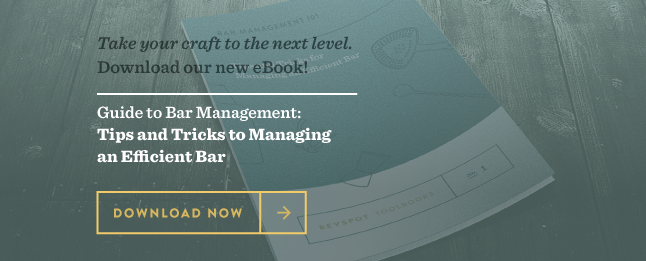
Becoming a Bartender: 8 Things to Consider Before You Apply
A good bartender has patience, creativity, and positivity – tonnes and tonnes of it.
But it’s not for everyone. If you want to know whether it’s for you, check out our 8 considerations before you become a bartender. Before you begin with the big list of realism, though, it wouldn’t be right to forget to sing the praises of tending bar. It has a lot of perks, and for the right person, it’s an energizing, off the beaten track career path.
My favorite bit? You can learn on the job, you don’t need a degree to do it, and you can continue learning as long as you’re willing to keep pushing yourself. Your cocktail knowledge, rapport, and juggling skills can always be improved.
It’s also incredibly fun when you have a great team behind you, you love your bar, and you’ve honed your skills. And, even if you don’t pick it as a career, it’s a skill you’ll always have, and there’ll always be bar jobs if you want the work. With that said, read on for the realism…
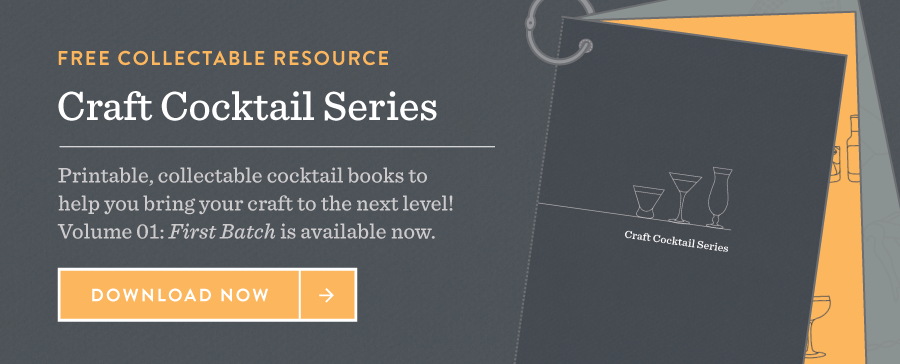
1. You’ll have to refuse to serve people without ID: can you hold your ground?
When you’re working behind a bar, you need to be vigilant and look out for underage drinkers. And if they have no ID? Get used to saying “I can’t serve you” 44 times on a Friday night.
2. You’ll have to be responsible: could you spot a test purchaser or fake ID?
Test purchasers come into pubs, bars, and shops – literally anywhere that has an alcohol license – and request a drink. After a while, you tend to get used to the types that police send in, but you shouldn’t rely on your nose. Your job is to recognize anyone who isn’t 21 and ask for ID.
Fail, and you put yourself and the bar you tend at risk. Which is scary stuff, the more training a bar offers, though, on how to spot a fake ID and asking for proof of age the more they and you are protected against this risk – and, if it does happen, the owner of the bar can prove they’ve taken action to train employees on alcohol licensing laws.
3. You’ll have to work late shifts: consider yourself a night owl?
The shift patterns are never nine-five. So, are you willing to work late nights and weekends? Working in a bar 100% means working unsociable hours, but working them is fun if you’re working as part of a good team and you like the job. It can also mean missing out on cinema trips and Sunday hangouts with your nine-to- five pals. You okay with that?
4. It isn’t always mayhem: could you make a slow shift productive?
Are you the type of person who can keep busy? Part of bar work is all about preparation – there are barrels to shift and counters to clean and the slow moments are the time for them. If you’re not the type of person who wants to keep busy, bartending isn’t for you.
5. You’ll get some abuse: how do you feel about handling rude or aggressive customers?
When you’re being responsible and asking that Macaulay Culkin look-alike for their ID, you will have to deal with some verbal abuse – some might even threaten physical abuse.
Are you a customer orientated person? Do you have good customer service skills, do you enjoy catering for people and are you comfortable dealing with complaints and queries? These are the kind of considerations you need to make – because you are entering the hospitality and service industry where customer service skills are everything.
6. You’ll need to cut people off: are you good with drunk people?
When you cut someone off, it means that you’ve made the decision to refuse to serve them because they’re too intoxicated. It’s a hard conversation, like, really, truly, awkward or horrible. (Although, it doesn’t even have to be a conversation – one trick is to serve a shot of coffee or ask them to drink a pint of water and see how they get on.) You need to be the kind of person who can stand their ground, remain unintimidated and be confident, calm, and creative enough to handle the situation with charm and charisma.
7. You’ll be on your feet all shift: does that work for you?
Tending bar is physical work – which, depending on your perspective, is a good or bad thing. Me? I’m all for it. Sitting behind a desk for 8 hours a day is terrible for your mental and physical health. Get a real good pair of orthopedic shoes on your feet and bartending sure feels like the healthier choice. But, if that’s not for you, bartending could make you grouchy and lazy. You’ll dislike it, and your colleagues will be annoyed if you don’t pull your weight.
8. You’ll have to do an inventory: but BevSpot can help.
It’s not all pouring drinks and serving smiles – the job does entail admin. You have to take inventory and order in more, and it isn’t just liquor and mixers. Well-stocked bars need to make sure they have plenty of fruit, eggs, and other garnishes. Are you willing to be accountable? Inventory is important no matter how busy your shift has been – if it needs doing, it needs doing.
Hey bar folk, do you agree with my tips or have your own to suggest? Leave a comment below and tell someone what you wish the newbies knew.

Schedule 15mins to chat with a product specialist
Start a FREE Trial Today! BevSpot offers full product education and account setup for all customers! No card Information needed!

3 Things to Know When Reinventing Your Bar
Making the decision to change the identity of your business can be a tough call.
It can be hard to let go of a concept, even as you’re watching it declining in success or never reaching success to begin with. Let’s face it, it’s your baby—you don’t want to let it go. However, with the harsh reality of high food and beverage establishment failure rates, it is imperative for bar proprietors to make the call when the numbers pointing to danger.
With all of that being said, bar owners need to make sure that they put their reinvented concept in the best position to succeed moving forward. Here are three things to keep in mind as you mull the details over:
Should you actually be reinventing?
Make sure you’re not feeling the air or going with your gut on this one. You also certainly shouldn’t be doing it on a whim. It is a massive business decision to completely reinvent the identity of your bar. Take a deep dive into your numbers and confirm there aren’t underlying root causes for your bar’s poor performance such as mismanagement or bad pour costs in your menu that could be fixed with a menu revamp.
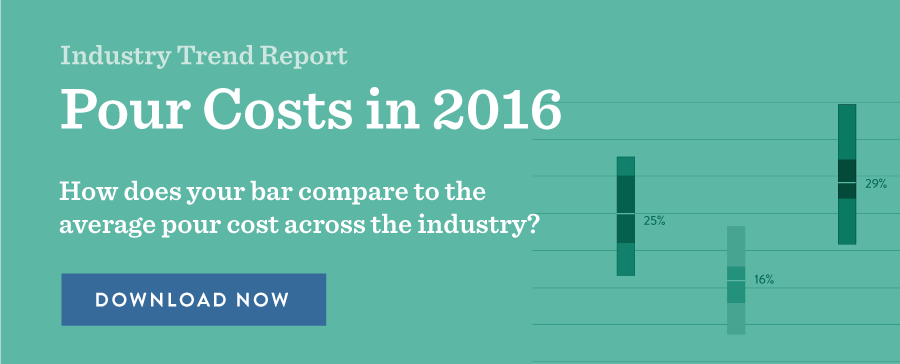
As a bar proprietor, you should know your business better than anyone. You should also know your clientele just as intimately. If you’re seeing sales start to slump and there’s no evidence of in-house problems, take some time to look around what’s happening in your neighborhood if you haven’t already. Visit neighboring new and old establishments with a critical eye and try to understand the reasoning behind their performance, especially within the context of the local consumer population.
What should you reinvent to?
In order to determine how you want to reposition yourself in the market, the aforementioned neighborhood research is important. You can also do some research into what is trending around the industry and understand why the trends are occuring. A prime example of fully taking advantage of current industry-wide trends to channel local success would be the recently opened gastropub Nosh & Grog based out of Medfield, MA.
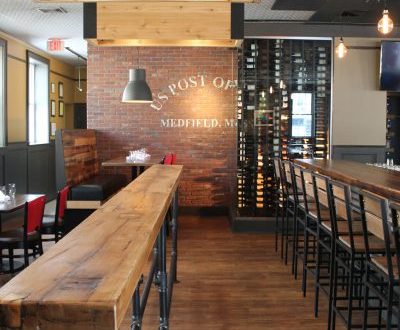
Nosh & Grog’s owner Craig Neubecker had previously owned the restaurant Zebra’s Bistro and Wine Bar that occupied the exact same space for 17 years. Despite Zebra’s initial and long-term success, the operating model of Zebra’s was finding problems with encouraging a more regular local following.
Zebra’s was focused on providing a high-end dining experience complete with an impressive wine program for its audience. As such, Craig would see beverage sales focusing largely around wine by the bottle. However, Craig was also finding that the public perception of Zebra’s as a “special occasion destination” caused an infrequent client base. In order to track more consistently with the local populace of Medfield, Craig and the rest of his team developed a concept that took advantage of recent trends in the industry such as craft beer, locally sourced food, and a relaxed neighborhood atmosphere.
“It’s much more of a casual, accessible, and approachable environment. As opposed to Zebra’s where you might go once a year for your anniversary, you go once a week at Nosh & Grog. That, of course, had impact on sales, profits, and usage.”
With his new concept, Craig would see a major shift in sales from wine by the bottle towards beer and wine by the glass. These new beverage types Nosh & Grog have tapped into might not have as high of a profit margin as before, but the more frequent clientele would more than make up for it.
Is your vision of the new concept clear and thoroughly thought out?
There are many forms that your reimagined bar can take. It’s important to make all the details clear before moving forward. If you are changing the brand entirely, the option of shutting down your old bar and going through the clear transition process such as what Craig did with Nosh & Grog can be helpful in resetting patron expectations. However, it can be extremely costly to not be operating during that period of time. You also need to cover details like whether you need to reapply for a liquor license or whether you need to take time to retain your staff or hire new staff.
Reinventing or relaunching a concept can feel like opening a brand new bar. That’s because you essentially are. It can be a breath of fresh air for you and your staff, but it can come with problems that you might have solved years ago or brand new issues if you let things get out of hand. It is essential that you move forward with the diligence and oversight that you understand a new bar requires to succeed.
Schedule 15mins to chat with a product specialist
Start a FREE Trial Today! BevSpot offers full product education and account setup for all customers! No card Information needed!
The Cocktail Profitability Handbook
Overview
Data can be a powerful tool in a bar manager’s toolkit. In our previous analyses of bar profitability, we looked into the data of our users’ overall profitability metrics. What we discovered was that the typical pour cost of a BevSpot user was about 15% for spirits & cocktails. What this translates to is that, before paying wages and rent, the median BevSpot establishment is getting an 85% gross profit margin on its Moscow Mule.
The Cost Data
If that number seems off to you, your instincts are close to the truth. When we delved a little deeper into the data, it revealed that the 15% aggregate pour cost does measure general profitability for individual establishments, but it also represents an average of all the various drinks being sold by those bars. As most will know from experience, costs and pricing can vary widely between drinks, especially cocktails: the profit margin on a bar’s Negroni recipe almost certainly won’t be the same as that of its Old Fashioned.
Cocktail Sales Data and Approach
We took a look at sales data from nine major metro areas across the United States to see which popular cocktails are the most and least profitable for bars. We then organized our results by International Bartenders Association cocktail category. Here’s what we found for 28 classics.
The Curious Case of Wine Consumption in New England
If I were to ask you which three states are the home of the nation’s most enthusiastic wine drinkers, what would you say?
Probably California, New York, and Washington (or maybe Oregon depending on your affinity for a different style of pinot noir)—all states with notable, and numerous, wine growers and producers. That just makes sense, right?
What would you think if I said you were off—and I mean way off. According to a 2014 survey by the Beverage Information Group, three New England states hold the top spots in wine consumption per capita: New Hampshire at 19.6 liters per capita (~15 bottles per year), Vermont at 17.5 liters, and Massachusetts at 16.9 liters (compared to the national average of 10.7 liters according to The Wine Institute). Meanwhile, every New England state sits in the bottom half list of number of total wineries.
At a time when locality and terroir dominate conversations and practices in the food and beverage industry, these statistics are an anomaly, a veritable disregarding of popular epicurean sensibilities. Or perhaps they’re not. Perhaps there is another tradition playing out in New England that exists outside of the gastronome’s focus on “taste of place,” without entirely subverting it. Whatever that may be, it’s worth investigating why New Englanders are downing bottles at a bacchanal rate.
Part of this is resultant from the culture of drinking in the region. New Hampshire and Vermont both fall in the top 5 for alcohol consumption per capita as well, according to another 2014 report. Curiously, however, while these states are atop the list in the wine category, they fall closer to national average consumption for beer and spirits. If we can paint a more accurate picture of the individuals and communities driving the wine craze.

A Survey of New England Wine Drinkers
Full disclosure, it’s unlikely that all of the wine being consumed is fine wine. Many a time have I stocked up on Franzia at one of New Hampshire’s massive discount state liquor barns en route to a rafting trip down the Saco River; and I’m not the only one. Realistically, the market for cheaper wines is a contributing factor. But, as these bottles are distributed across the nation, their easy access alone doesn’t account for the findings in these studies.
Consider some of the more densely populated cities and towns of New England that inevitably bolster these numbers. These places are often regarded as hubs of various industries—tech, medicine, education, service, etc. This, in a sense, makes it a perfect climate for more sophisticated wine drinking.
“The high density of universities and colleges in our area and a national movement to more wine education (including its health benefits) have contributed to the younger generation’s desire to consume more wine.”
Tom Difilippo, co-owner of Spinning Jig, a new wine distributing company that specializes in upscale, small production vintages, suggests that, “the high density of universities and colleges in our area and a national movement to more wine education (including its health benefits) have contributed to the younger generation’s desire to consume more wine.” Hence Boston’s many wine studies programs and its hospitals’ research on wine drinking.
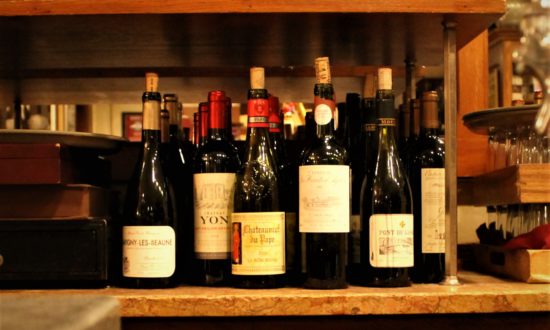
Rory Caviness, the bar manager of La Voile, a quaint French bistro in the Cannes tradition, sees another source of inspiration, viewing “the Northeast as the most European part of the country. It is part of their views and culture, their custom—they grow up with the family at a dinner table with wine.” Accordingly, access to a variety of reds, whites, sparkling, and other iterations continues to expand with the opening of wine bars and restaurants like La Voile, that include wine-drinking as a major part of the epicurean experience.
“…the Northeast [is] the most European part of the country. It is part of their views and culture, their custom—they grow up with the family at a dinner table with wine.”
Combining these global visions with a taste for education and a diversity of industry excellence, we can surmise that knowledgeable and curious consumers, with a fine eye on craft, do their fair share to contribute to New England’s high rate of wine consumption.
Sourcing, Well Outside of Wine Country
All this considered, the region’s relatively small share in the wine production industry remains a conundrum within this larger mystery of wine drinking. Harvests here are short and low-yield. Seasons, generally speaking, are temperamental. As a result, many farmers turn to making alternative wine-like beverages such as apple, cranberry, and blueberry “wines” by subjecting more hearty regional fruits to a similar fermentation process. Sure, wineries in New York state are close, and the budding vineyard proliferation in the mid-Atlantic coast is only a few hours’ drive away, but that’s hardly an explanation.
What New England does have is a growing number of wine distributors. Some, like the Winebow Group, boast multiple collections at their Somerville-based facility (one of many across the nation) to accommodate a variety of buyers. Others, says DiFillipo of Spinning Jig, focus on developing smaller, handpicked, and esoteric portfolios to “get [their] product out to those clients that seek out alternate options to the masses of wine produced.” Furthermore, thanks to the Supreme Court repealing of Granholm v. Heald, consumers can now buy direct from wineries, giving the area even better access to producers from Europe, the West Coast, and beyond.
The Bottles at Your Bar
These factors point towards a gainful conclusion: that New Englanders consume so much wine, in part, because they are so interested in knowing wine, to be a major part of a global industry otherwise isolated from them by climatic restraints. Consumers and providers all have a heavy hand in this process. Individuals create the demand for both volume and quantity while distributors and sommeliers enlighten patrons to new products with their extensive offerings.
The good news for restaurant and bar owners in the area is that it’s hard to go wrong when curating a wine list that meets the needs of potential guests. Certainly you’ll want to make sure that what you offer is in league with other items on your menus. Additionally, take advantage of the freedom you have to diversify your offerings, as wine is one of the few things at your restaurant that benefits in coming from afar. In New England there’s a broad spectrum of wine drinkers, countless places to buy it, and, without a doubt, all of that wine wants drinking!

How Bars Can Weather Winter Storms (And Other Inclement Conditions)
There is no doubt that winter is officially upon us in New England.
The first Saturday of the year brought a massive snowstorm that impacted bars and restaurants all throughout the region. As wintery regions in various parts of the United States hunker down and brace themselves for more snowy and icy precipitation in the upcoming few months, we sought out some ideas from locals on how bars can navigate inclement weather in snow and ice-prone areas.
Scarlett Delgado is a seasoned, popular bartender who works at three diverse establishments in Providence: the famous Hot Club on South Water Street (which served as a backdrop in a scene in the Farrelly Brothers’ 1998 comedy There’s Something About Mary), at the bar in arts nonprofit AS220‘s downtown performance space and cafe on Empire Street, and at Nolan’s Corner Pub, a beloved West Side dive bar at the end of Atwell’s Avenue near the Route 6 overpass. Delgado offered us insights on how each one of these very different bars handles major snowstorms.
Safety First
It should go without saying that the #1 priority for any establishment facing inclement weather should be the physical safety of its employees and guests. It is more or less guaranteed that some people will be willing to brace the elements no matter how bad they are, but just because they want to doesn’t mean that they should.
Most Providence businesses use citywide parking ban announcements as a determinant for whether to open late (or at all) or close early; otherwise, a lack of customers in the bar is often a good enough reason to close.
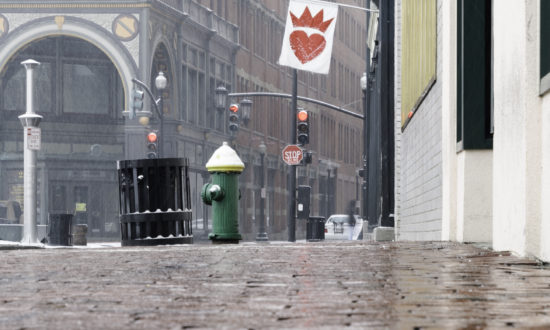
Location, Location, Location
Parking bans aside, a lot depends on where a bar is situated and whether employees drive vehicles equipped to handle snow, and in that sense, there are rarely any hard and fast rules. Because AS220 is at a downtown location primarily reached on foot, they are more likely to stay open provided that employee safety has already been taken into account, says Delgado, who lives outside the city and commutes by car. She notes that AS220 is great about insisting there always be at least two employees in the building at all times (including kitchen workers and others) so that employees can walk each other safely to their cars at night.
Because many West Siders tend to walk everywhere, Nolan’s receives a lot of by-foot patronage as well, with the added benefit that the owner lives above the establishment and is willing to cover the bar anytime an employee feels nervous about driving home late, so there is rarely (if ever) a need to close early. It’s good to keep in mind, however, that walking by foot can also be extremely dangerous, so it is best to always use caution.
Hot Club, on the other hand, has been located on the Providence waterfront since 1982 and has its own parking lot as well as street parking, and many of its patrons reach it by car. They are known for being open every single day of the year except for Christmas Day and the day of their holiday party. Delgado jokes that, “We’re open for rain, sleet, and hurricanes” and remembers working there the day of Hurricane Sandy in 2012, when the bar was jammed full of people who had come to watch, drink, and enjoy the storm. The city’s hurricane barriers had been closed, but storms are always unpredictable; still, many patrons still remember and talk about it years later.
Despite its track record, Hot Club decided to close its doors at 4:30 on January 7th of this year, making a judgment call based on how bad the storm was already and how long it was expected to keep going. Having to plow and salt a parking lot obviously creates additional considerations, but Delgado admires how Hot Club’s owners prioritize their employees’ well-being and regularly offer to drive every single employee home in their large, snow-friendly SUV if there is ever a situation where snow hits unexpectedly while employees are already at work.
Capitalizing on the Storm
Winter months tend to be tougher for the restaurant and bar industry as a whole, so assuming that safety concerns have been addressed, it can be smart to come up with creative ways to make the most of the “snow day” bandwagon through clever marketing and promotions. The Rosendale on 55 Union Street downtown decided to spotlight their first “Snow Storm Party of the Year” on social media, with the bar open regular hours and kitchen open late, encouraging followers to “Grab your sleds and get down here!” A bartender at the elegant Dorrance downtown shared that when especially cold weather is coming in, the forward-thinking kitchen staff will prepare hearty comfort food classics as specials; a recent batch of shepherd’s pie sold out completely.
It’s also true that although parking bans are important, calling them is not an exact science. There is a local anecdote about a recent Valentine’s Day where a massive blizzard was expected to hit. Our restaurateurs count on Valentine’s as their biggest day of the quarter and one of the biggest of the year, and in this case, the snow hadn’t arrived despite the parking ban announcement. Establishments citywide were so frustrated that they got together as a group, called City Hall, and petitioned to have the ban moved back until later. City Hall listened, and it ended up being a successful day for restaurants.
Inclement weather is dicey for any business in a cold weather area, but the most important rule is to always put safety first. Because of major variations in location, topography, buildings, and state or city leadership, there are many grey areas that owners and decision-makers must navigate to walk that line between being safe and staying profitable. It can help to hear what others have done and are doing, but a lot of it will be trial-and-error. But as long as you are making sure your employees and customers are as safe as possible, you should be fine.

Schedule 15mins to chat with a product specialist
Start a FREE Trial Today! BevSpot offers full product education and account setup for all customers! No card Information needed!
